Don't wanna be here? Send us removal request.
Text
Is sleep for the weak?
If you had spoken to me a few years ago about sleep, I probably would have told you that sleep was for the weak. In reality that was just an excuse. I couldn’t sleep and even if I wanted to I couldn’t. When I did it would often lead to me waking up from sleep paralysis. Throughout high school my average night of sleep would last around 5-6 hours. That’s when I could sleep. When I couldn’t, it would be far worse, leading to me having pretty severe concentration issues and regular naps. To maintain energy levels at school and work I pursued a healthy diet of constant caffeine followed by an excessive amount of sugar. When the weekends came around, I would regularly go out till ungodly hours of the morning, often leaving myself with the equivalent of jet lag. I used to think it strange that people went to sleep before 12am as I felt like this was when my own brain finally started to wake up.
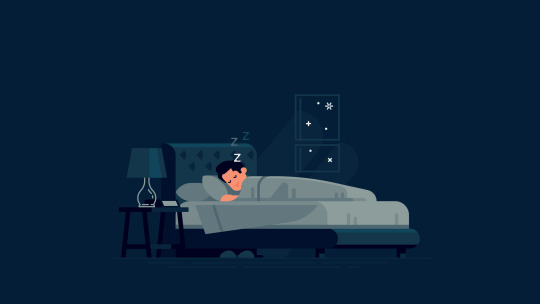
Flash forward to where we are now and sleep is something which I prioritise. I aim to have no less than eight hours a night (albeit with a few exceptions). Such a dramatic shift in my priorities came in part to being sick of constantly feeling like I didn’t have enough energy to do the things I love e.g. to write. Being constantly lethargic comes at a cost. I know that most people don’t have these sorts of problems with sleep, which is fantastic for you! Although infuriating at the time, having these issues caused me to try and work out some solutions to help improve my sleep. I think that some of the points which I came across may help the everyday reader. It is only now that I can appreciate in hindsight that neglecting sleep killed my creativity and learning ability.
Whilst researching my own sleep, I came across a book called Why We Sleep written by Matthew Walker. A book which Bill Gates has recommended stating - “It took me a little longer than usual to finish Why We Sleep—ironically, because I kept following Walker’s advice to put down the book I was reading a bit earlier than I was used to, so I could get a better night’s sleep.”

Matthew Walker is an English scientist and professor of neuroscience and psychology at the University of California. He is one of the most high-profile public intellectuals focused on the subject of sleep. Who better to accept advice on sleep from than him?
We still know surprisingly little about why we sleep. Walker has been studying for 20 something years, publishing over 100 scientific studies. He is a New York Times best selling author. He states that 1 in 3 people are not getting enough sleep as the average adult requires 7-9 hours a day.
This is because when we sleep there are two different sorts of sleep which we switch between over the course of the night. Too little of either can negatively impact us. The two sorts of sleep are NREM (Non Rapid Eye Movement) sleep and REM (Rapid Eye Movement) sleep.
In NREM sleep, our respiration and heart rate slows down, our body temperature drops and our brain waves slow down - for reasons that we don’t yet know. The purpose of NREM Sleep appears to be to consolidate information learnt, and transfer it throughout the brain into long term storage. This captures recent memories making you far less likely to forget them. It also improves our immune system. In later stages of NREM sleep there is a cacophony of waves before you switch into REM sleep.

In REM sleep brain waves are much more rapid than NREM sleep. Parts of your brain in REM sleep are actually up to 30% more active than when you are awake! It appears that REM sleep acts as a free overnight therapy session for our brains in the form of dreams. It helps us processes the information taken in throughout the day by comparing, testing and connecting recent memories.
Now that you know a bit about sleep, I though for the rest of this article I could share with you the points which I found to be most interesting and useful with the aim of boosting your knowledge and sharing what has worked for myself - and what I still find to be difficult.
The points are as follows:
Regular bed time and wake up time: Having a regular bedtime, ideally with a bedtime routine e.g. read, drink tea, meditate, helps you be able to fall asleep quickly when it is finally bedtime. Waking up at the same time everyday helps to not disturb the cycles, as your brain switches between REM and NREM sleep. Your brain also creates melatonin - the chemical which helps you sleep on a 24 hour schedule, by regulating what times you do certain tasks.
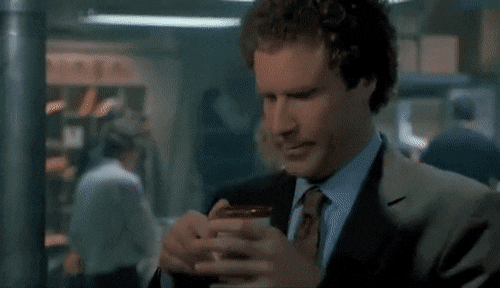
No coffee: As we all know caffeine keeps you awake. What most of us don’t know is that caffeine has a half life which can last five to seven hours! This means if you have your cup of coffee around 7:30pm, by 1:30am you may still have 50% of the caffeine in your system preventing proper sleep.
Reduce blue light before sleep: No phones. No screens. Ironically you might be reading this article on your mobile phone. The problem with having such addictive little machines at our fingertips is often we will end up scrolling, reading or watching before sleep. It is important for us all to prioritise reducing blue light for an hour prior to getting into bed.
Chill: When your body temperature drops, you have a better sleep. An easy way to do this is by having a warm shower before sleep. Once you get out of the shower your body temperature drops, leading to… you guessed it: better sleep!
Nap time: Nappers out there, you are in luck! Having a short 20 minute nap some time before 3pm, can actually boost your creativity. Studies have been done in places like Italy where they regularly have “Siesta’s” - a daytime nap after lunch.
A lethal experiment: 1.6 billion people across 70 countries twice a year participate in a simple test to see what the devastating effects can be when losing only an hour of sleep. Have you worked out what it is? Daylight Savings. When we lose an hour, there is a 24% increase in heart attacks. When we gain an hour we see a 21% reduction in heart attacks. We also see a reduction in car accidents and suicide. That’s only one hour less sleep!
Alcohol: Many individuals believe that alcohol can be used as a night cap. Ironically like most sleeping pills, alcohol actually sedates the prefrontal cortex. Sedation is not sleep and prevents REM sleep. Which as we have previously discussed is crucial to process what we have learnt throughout the day.

But what about Saturday night drinks? Here I have included a direct story from the book.
“Framed practically, let’s say that you are a student cramming for an exam on Monday. Diligently, you study all of the previous Wednesday. Your friends beckon you to come out that night for drinks, but you know how important sleep is, so you decline. On Thursday, friends again ask you to grab a few drinks in the evening, but to be safe, you turn them down and sleep soundly a second night. Finally, Friday rolls around—now three nights after your learning session—and everyone is heading out for a party and drinks. Surely, after being so dedicated to slumber across the first two nights after learning, you can now cut loose, knowing those memories have been safely secured and fully processed within your memory banks. Sadly, not so. Even now, alcohol consumption will wash away much of that which you learned and can abstract by blocking your REM sleep.
How long is it before those new memories are finally safe? We actually do not yet know, though we have studies under way that span many weeks. What we do know is that sleep has not finished tending to those newly planted memories by night 3. ”
- Excerpt From: Matthew Walker. “Why We Sleep: Unlocking the Power of Sleep and Dreams.”
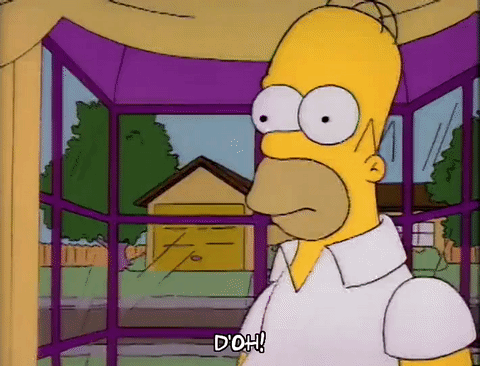
Further Reading
If you liked this article I recommend reading the entire book, as it’s full of fantastic snippets of information. Changing my sleep has had such a huge impact on my memory, concentration and creativity and I truly hope that reading this encourages you to continue to prioritise it.
If you want to read the book, you can access it here:
Amazon: https://amzn.to/2XSzFZ5
Audible: https://adbl.co/3ioUa9j
Or you can even undertake Matthew Walkers new Masterclass “The Science of Better Sleep”: https://bit.ly/3oZ9Q5t
Unfortunately I’m not sponsored by any of these links, I’m just trying to help!
0 notes
Text
My first float tank experience:

Yesterday I had my first experience in a sensory deprivation tank, and though it was highly enjoyable, I couldn’t help but wish it had been slightly more spectacular.
The morning of the float tank session I woke up dizzyingly excited. You see I had been hanging out to hop into one of these things for a while now, but had been putting it off due to the price. Luckily for me, my girlfriend had bought me a pass as a gift for our anniversary. If you are reading this now, thank you!
Up until recently the venue had been closed due to COVID-19. It felt as though I had been waiting for an eternity. But the day was here so I jumped on a tram. I arrived at the building approximately 10 minutes early for my appointment, unsure of what to expect. As I walked in I was greeted with an inviting space, similar to that of a yoga studio. White walls, natural light, and minimalistic design. In the centre of the room was a large wooden table with some extravagant looking tea at its centre. It appeared nobody else was in the building.
I sat down and made myself comfortable, eagerly waiting until a man came out from a room at the back. I greeted him enthusiastically, before realising that he didn’t actually work at the place. Whoops. However he did say that “I was in for an amazing experience”. So I sat back down and continued to patiently wait.
About a minute later a young lady emerged from the room. This time I hesitantly waited for her to greet me, however I suspected that she might work here due to the ethereal tattoo on her arm.
“Hi, are you here for the float tank?”
Bingo. Not that you should usually go around profiling people.
I replied yes and she proceeded to give me a smart tablet which she called an “iPad”. It definitely was not an iPad, but I quickly stopped myself from correcting her. Maybe it’s silly, but if you had a Nokia phone you wouldn’t call it an iPhone now would you? At the end of the day who cares but at that moment in time it caught my attention, but that’s besides the point.

She offered me tea, which I happily excepted and she asked me to sign a waiver; a voluntary relinquishment or surrender of some known right or privilege; just incase I accidentally drowned myself in the tank. I skimmed the document and quite literally signed, my life away.
She then opened the door and showed me where the bathrooms were, suggesting that I used them before hopping into the tank, which I did.
She then took me into one of the rooms where the tank was located. It looked like a giant modern bathroom. In the right side of the room was a literal shower, and in the middle was the tank. It looked like a spaceship or something else from a science fiction film. I couldn’t help but think somehow it reminded me of an Apple product with it’s flawless design. Maybe it was… but I highly doubt it.
A blue glow emanated from the tank.
I was instructed to have a shower before and after the tank in order to not contaminate the water. She showed me how to open and close the tank, and showed me the emergency button before she left and I was there on my own.
I stripped my clothes off until I was in my birthday suit, and had a quick shower before walking over to the float tank and climbing into the glowing blue water.
The water was almost identical to my body temperature. I could barley feel it, as I lowered the lid of the tank. I turned off the light as calming meditation like music played in the background.
For my entire life I’ve never been able to float on my back, for some reason I am just unable to. I usually just sync. However the vast amount of epson salts in the water lifted me easily. It's a surreal experience just being able to float. The only problem was that for some reason I just seemed to drive too easily. I would close my eyes and listen to the music, only to slowly bonk into the side of the tank.
Before I had got into the tank the lady had informed me that the music would play for 10 minutes at the start of the session, and play for another 5minutes at the end. The rest would be 60 minutes of silence. I know that for some of you that might be your version of hell, but having meditated almost daily for two years now, I am comfortable spending time alone with my thoughts. I was excited. I was ready to explore my subconscious in hopefully a new and exciting way, if of course I didn’t drown.
The music stopped. Silence.

I kept my eyes shut for the majority of the session, not that it would have made much of a difference and spent the ten minutes trying to get comfortable. Eventually i settled with my hand by my side and just began to focus on my breath.
The rest of my experience was a bit of a blur with only certain moments of recollection which I will include here:
Feeling a great sense of serenity.
I felt like I lost all concept of time, with bursts of it feeling both slow and fast simultaneously.
Most obscurely I felt reminded of what it was like to be in the womb. It sounds absurd and strange but at one point my subconscious felt like it was saying… So this is what it was like.
Bumping against the side of the walls repeatedly. Interestingly enough as you float it feels like you are going at super speed, almost like you are falling.
For the last 10 minutes or so, despite using the bathroom before the tank, I was busting. Sick bastards shouldn’t have put such delicious looking tea on the table.

And then it was over. The music started playing. I got out of the tank and immediately showered, got dressed and left.
Surprisingly the most amazing part of the whole thing was leaving the building. I was blasted with sounds from all direction, incredible smells and of course blown away by the spectrum of different colours. I was shocked that being in the tank had this effect on me.
After this rush of stimuli I suddenly understood why people do it. I was awestruck by the beauty of everything I could see, hear and smell. Going into the tank I had expected to love the tank. Leaving the tank made me love the world.
Would I go back? Definitely, but at a $50 price point I don’t think I would go any more than once a year. I do however recommend that you should try it, but with potentially lower expectations than what I had.
0 notes
Text
What is the game of life?
Recently I was listening to the Joe Rogan Experience, and was fascinated by a conversation between the host, Joe Rogan and guest Lex Friedman. Friedman is an Artificial Intelligence research scientist working on autonomous vehicles, human-robot interaction, and machine learning at MIT.
Before listening to the conversation I had never heard of Conway’s Game of Life, but the title alone intrigued me, leaving me with some pretty serious questions. Who is Conway? And what on earth is his Game of Life?

John Horton Conway was a British mathematician whose work contributed to many different fields of mathematics. These include, but are not limited to finite groups, knot theory, number theory, combinatorial game theory and coding theory. Most notably he created a game called “Conway’s Game of Life”.
Now before I lose some of you completely, maths has never been a strong point with me, and most of these theories fly completely over my head. Despite this, Conway’s Game of Life still fascinates me and I know that it will fascinate you too. So please bare with me as this theory could have some very interesting implications for us as a species.
Developed in 1970, Conway’s Game of Life is a Zero-Player game. This means that you as the player make one initial move at the start of the game and the rest of the interactions occur automatically. The game runs off a set of simple rules:
Any live cell with fewer than two live neighbours dies, as if by underpopulation.
Any live cell with two or three live neighbours lives on to the next generation.
Any live cell with more than three live neighbours dies, as if by overpopulation.
Any dead cell with exactly three live neighbours becomes a live cell, as if by reproduction.
These rules can then be compared with and condensed into the following:
Any live cell with two or three live neighbours survives.
Any dead cell with three live neighbours becomes a live cell.
All other live cells die in the next generation. Similarly, all other dead cells stay dead.
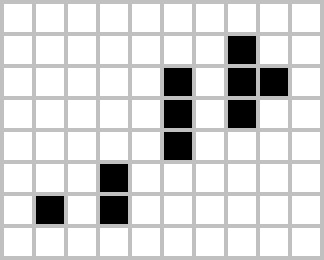
After the initial pattern is created by the user, the program applies the rules creating the first generation of cells. After this, the program automatically applies the rules to the next generation of cells. Each reproduced cell has no idea of what the previous cells have done, it just applies the same set of rules.
Things become interesting as you observe generations of cells living and dying. As you watch from above, distinct patterns begin to emerge and appear to animate. It almost looks as though the patterns created by the cells are alive. Different initial patterns create different forms of shapes from cells, which then act differently to each other. There are three main groups of shapes. Still Lifes, Oscillators and Spaceships.
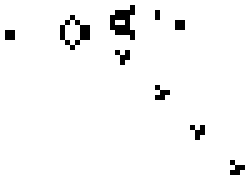
“Many patterns in the Game of Life eventually become a combination of Still Lifes, Oscillators, and Spaceships; other patterns may be called chaotic. A pattern may stay chaotic for a very long time until it eventually settles to such a combination.” The same thing applies with the second law of thermal dynamics: Everything becomes more chaotic, with pockets of complexity.
Now that you have a basic understanding of the game, I’m sure you are wondering how this game has anything to do with humanity? The easiest way to describe this is with a simple analogy.
When a honey bee is working, it has no idea what it is doing. It is solely aware of its own individual task. Its little bee mind is blissfully unaware of the infinite complexities of creating a hive, or indeed making honey. Yet it still works until it eventually dies.

In many ways a bee acts almost identically to a cell in Conway’s Game of Life. Just like a cell, a bee has no idea of what’s going on, it is just applying a set of simple rules.
As humans we tend to busy ourselves with our own little lives. Our jobs, our friends, our families, our stuff. Even though it might not always seem like it, in reality we might be apart of something much bigger than what we can perceive from our limited perspective, just like a bee in a hive.
Now if Bees make honey, what exactly do people do? This is certainly an interesting thought. If this logic can be applied to bees creating a hive, what might us humans be creating?
I am no expert in this field, and I don’t claim to be, but if I was observing humanity as a bystander my guess is that it would probably have something to do with technology.
Especially when considering the astounding and rapid developments of AI, Quantum Computing and Brain Computer interfaces such as Neuralink. These fields are developing faster and faster leading to more advanced designs at an exponential rate.

With simple rules crazy things can become possible if you look from a different perspective. Shine enough sunlight on rock (Earth) floating through space and time, and you eventually get a iPhone.
It is amazing how many questions a simple game can create and is remarkable how much complexity can be created from simplicity, and with simple rules how much richness and beauty can arise.
In April 2020, Conway passed away at the age of 82 due to complications from COVID-19. I am grateful for him and his work for showing me a different perspective on how to look at the world.
1 note
·
View note
Text
Is Meditation for Morons?
I’m can’t exactly recall the first time I decided to meditate. I just know what happened when I finally bothered to learn how to. It has since had a profound effect on my life.
Now I know what you are probably thinking… “Meditation? I don’t need any of that woo woo crap in my life.” That’s at least how I used to feel about it, but who knows? Maybe you are a little bit less cynical than I was.
It is somewhat ironic that I am now the one who is writing a blog on meditation and its benefits.
When I first heard about meditation I immediately dismissed it, until I rediscovered it about two years ago whilst listening to a podcast called The Tim Ferris Show. The podcast is a series of interviews where Tim Ferris interviews top performers in a variety of fields from all around the world. Surprisingly, over “80% of the people [he] interviews have some form of meditation practice”. That’s a significant percentage! I’m by no means insinuating that we all need to be world-class performers, but I feel that it could not hurt to learn from those who are achieving high levels of success. Especially when there is an easily identifiable common trait, which in this case is meditation.
It slowly became clearer and clearer to me that meditation might be less bullshit than I had originally anticipated.

Before we get into things, it is important to acknowledge that although meditation is now becoming increasingly commercialised and “trendy” in Western Cultures, meditation has been a huge component of many spiritual practices for many hundreds of years. In the East, meditation played a huge role in particular in both Hinduism and Buddhism. The earliest records of Meditation can be found in the Vedas, a religious text written in Sanskrit in 500bc. After reading the Vedas the Buddha added his own spin too, developing his own technique called Satipatthana, which is now most commonly known as Mindfulness. The direct translation is Sati (Attention) or (Remember) + Upa (Inside) + Thana (to keep) So Satipatthana means: To keep your attention inside.
Transcendental Meditation was introduced to the West in part by the popular culture of the 1960’s. A notable contribution was The Beatles sharing their experiences after visiting India. Although Mindfulness meditation was introduced much later to Western Cultures. Throughout this article I will primarily be discussing the effects of Mindfulness Meditation.
Over the last few years, the process of meditation, as well as its effects, has become a rapidly expanding subfield of neurological research. One of the most interesting experiments involved scientists conducting tests on a Monk, finding that although he was 41 he had the brain of a 33 year old. They gave him an FMRI scan while asking him to cultivate a sense of compassion by meditating, and the neural activity in his empathy circuits grew by 700-800%! One of the researches later wrote “Such an extreme increase befuddles science.”
When most of us anticipate getting burned our pain receptors act as though we are already suffering. So much so that when the pain actually comes nothing really changes. Once the physical stimulus stops the mental pain slowly subsides. Expert meditators act much less in anticipation of the pain and feel the pain more intensely while the stimulus is present. Their awareness of the pain ceases immediately as soon as the stimulus is removed.
Interestingly enough, the emotional centre for the brain, the Amygdala, acts in a similar fashion to the pain response. Meditators are often much better at responding in anticipation to emotional stress.

I’m someone who has always lived predominately inside their thoughts, probably leaning on the more erratic side. The thought of being able to sit in silence sorta freaked me out, not to mention seeming borderline impossible.
To understand what my mind looks like, you need to look no further than The Simpsons. Remember that scene where Homer is listening to Marge and inside his brain a monkey is clanging symbols? That’s the relationship I had with my brain almost all of the time. I believe this is the same for most of us.
Let’s put this to the test. You, my lucky reader, can be the test subject of a little experiment on your own psyche. For the next minute, I want you to close your eyes and just do your best to focus solely on your breath. 3…2..1. GO!
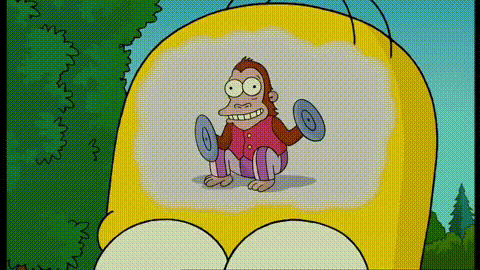
How did you go? Did you get lost in your thoughts? Did you forget entirely that you were even trying to focus at all? Where did your mind take you? Your relationship (or lack of)? Work? Or maybe even what you might have for dinner?
I found that when I first began meditating my mind would sometimes find itself distracted on the most obscure things. The reason why I am illustrating this point is because often when I speak to others who have tried meditation for the first time, I hear “I tried meditation, and it’s not for me - I just think too much”. I hate to say it, but these are the people who probably should be learning to meditate most of all.
The way I see meditation, is similar to closing background apps on your phone. It saves battery, and it just makes your phone faster. No brainer. I believe the same is true with meditation and giving your brain a break from constantly thinking.
A lot of the people who are reading this article will have grown up with internet access. Therefore, you have been bombarded with external stimuli in each and every moment. Bzzz, Bzzzz, Bzzzzzzzz. I’m sure that most of you will have received a messages even whilst reading this article.
Our brains have been over stimulated and are in a constant state of overdrive. Even when we are asleep our brains are constantly thinking, even if it is in the form of dreams! Obviously that isn’t a negative on it’s own, in fact sleep is crucial for the brain. But when you add everything up it’s a lot for a brain that has only been subject to this much stimuli for around 15 years - the first iPhone only came out 13 years ago.
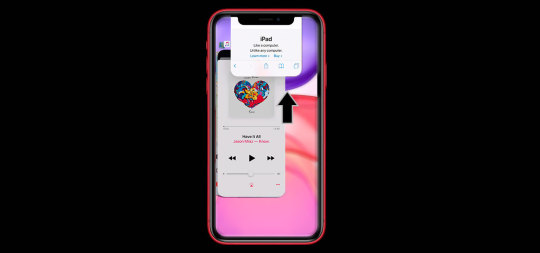
As you discovered just before, learning to “not think” doesn’t happen instantly. Like you, when I first attempted to sit in silence and tried to focus on my breath it did not work. My monkey mind remained supreme. Once again I was convinced that it wasn’t for me. But like all skills, meditation takes time and discipline to both learn, and improve.
I’m not saying this to deter you, it’s just the truth. An easy comparison might be to say that you wanted to learn how to play a musical instrument. It would be ridiculous to expect that you would be able to play your favourite song after your first time attempting to pick up the instrument. The same logic can be applied to meditation. It takes time, practice and discipline - however unlike musical instruments, you bring your mind to all situations in life. In my opinion, sharpening your ability to think is well worth the investment. According to scientific studies Mindfulness meditation induces big changes in the minds of experts, but when beginners first meditate not much happens.

At its core, the aim of meditation is to become more present in each moment by focusing and training attention and awareness. This is to achieve a mentally clear and emotionally calm and stable state. This in turn gives you the ability to have significantly more control of how you react to external and internal stimuli when they arise in your life.
In Mindfulness meditation, the goal is to act as an observer whilst focusing on your breath, watching your conscious experience as thoughts and sensations arise and disappear.
As mentioned earlier we are often multi tasking, with tech and external stimuli, but even whilst we are not, we remain deep in thought. We are often living in the past or in the future through memory rather than in each and every moment.
Meditation helps you learn how to not be constantly reactive to stimuli on the inside or outside. When I meditate, I find that it simply quiets my mind. It’s a simple reset of the brain allowing me to slow down and focus solely on the present.
Another way of looking at it is that meditation is like going to the gym. You can see it as a way of working out your mind. To begin with your mind will wander, time traveling from the past to the future. But with practice you can slowly train your mind to become more present.
Being present throughout the day allows me to consciously make better decisions, rather than just remaining on autopilot.
As hedge fund billionaire Ray Dalio puts it “When you're centred, your emotions are not hijacking you”. “Meditation is 'the single most important reason for my success.”
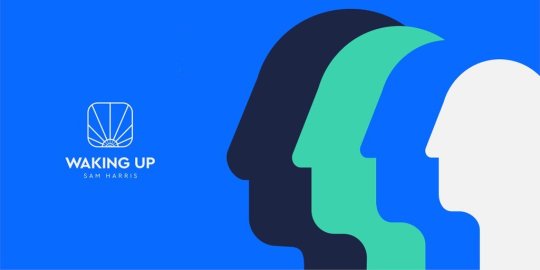
If you are looking to start meditation, Mindfulness meditation apps are a great way to initially learn how to meditate. I still find myself using one most days. Having tried all of them, I would recommend Sam Harris’ Waking Up app. Its thirty day training course is clear and concise and an awesome starting point to learn how to meditate. After that, new daily meditations appear on the app. Harris is a Neuroscientist and an Atheist and breaks meditation down in a way that is less spiritual which might make more sense to a western audience.
Worried it’s going to cost too much? If you can’t afford a subscription, you can email the help section and receive a one year free subscription. No questions asked. You have no excuse not to try it!
Other Mindfulness app alternatives are:
- Headspace - Andy Puddicombe
- Smiling Mind (An Australian non-profit alternative)
For further learning check out these guys:
Sam Harris, Mooji, Ram Dass and Andy Puddicombe
I am by no means an expert in this field, I just wanted to share something which has improved the quality of my life by at least 10%. I hope that it works for you too!
2 notes
·
View notes
Text
Should you upgrade your brain?
When I was a kid I loved science fiction. My mind would race at the boundless possibilities of what might await humans in the future. I was enthralled by thoughts of futuristic utopias and dystopias. Back then the symbiosis of technology and man seemed to be a far fetched fiction. Now I am not so sure. I first heard about Neuralink back in 2017, just after it was first announced to the general public. I have been captivated by the idea ever since. The thought of putting a chip in a brain, merging man and machine, is dizzyingly exciting. But it also invites potentially terrifying repercussions. In reality it might just be the first of many upgrades to our species yet to come. Sound a bit like an episode of Black Mirror? Let’s break it down.
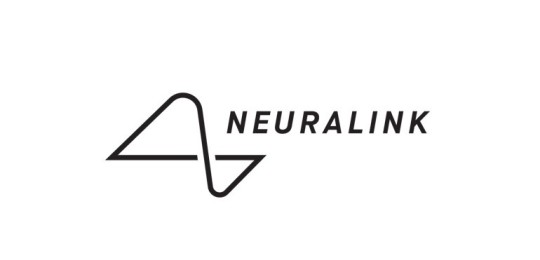
Neuralink was founded by tech entrepreneur Elon Musk, the co-founder of PayPal and founder of both Tesla (Electric cars) and Space-X (Aerospace). The goal of Neuralink is to “Create a high-band interface with the brain such that we can be symbiotic with AI”. Musk believes we currently have a bandwidth problem when communicating with technology, such as our phones. He gives the example that using our fingers to type is just too slow. What happens if we speed up the connection between ourselves and our devices? Musk thinks “It will enable anyone who wants to have super human cognition, to have it in theory”. So just how much smarter are we talking? If you look at the world through Musk’s eyes it’s simple. “How much smarter are you with a smartphone than without?”
Think about yourself and your own situation. How much in day to day life do you rely on your phone? I not only use it for internet access but rely on it for my calendar, directions and even note taking. When I leave my phone at home, I often feel like I am missing something. “If you can solve the data rate problem, you can improve the symbiosis that is already occurring between man and machine” Musk says. “Your phone is essentially an extension of you. You are already a cyborg - most people don’t realise that.”

So what exactly is the Neuralink device and how does it work? The Neuralink itself is a small, thin, circular device, approximately 3cm in diameter. A similar size to that of a coin. Attached to it are over 1000 electrodes (tiny wires) which are then placed into and throughout the users brain. Yes you read that right.
To place the electrodes throughout the brain, Neuralink has developed its own very precise robot to complete the operation. This is to ensure safety and remove the risk of any possible human error. Specifically, to make sure all veins and arteries are avoided when the electrodes are placed in the brain, thus not inducing any degree of trauma. “For version one of the device, it will basically be implanted in your skull” Musk says matter-of-factly. “Basically take out a chunk of skull, replace and put the Neuralink device in, place the electrodes threads in very carefully into the brain, before stitching it up”. The Neuralink device then replaces the previously removed piece of skull leaving only a little scar. It will have battery, bluetooth and an inductive charger so that it can stay charged and connect to your phone.
Worried you won’t like the Neuralink? It is able to be completely removed by the same robot! “You wouldn’t even know that somebody has it.”
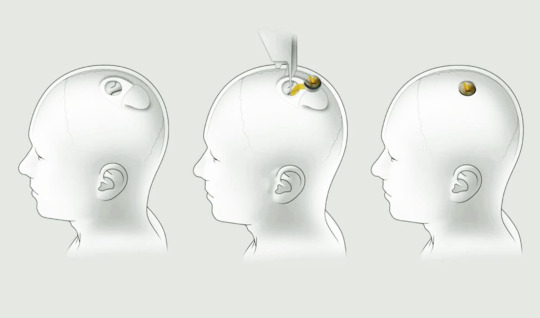
At the start Neuralink will be expensive and reserved for medical use only, with the first few iterations aiming to solve brain injuries. “It can interface basically anywhere in your brain.” Musk further elaborates “In principle it will be able to fix anything that is wrong with the brain”, including the restoration of limb functionality, eyesight and hearing. Neuralink could be used to fix many different brain injuries including severe epilepsy - by counteracting the pulse inside the brain in real time. It can also be used to aid recovery from strokes and Alziemers - by restoring memories using electrodes to stimulate parts of the brain to renew functionality. The first tests on a human are predicted to begin within the next year, after successful animal testing on pigs has occurred.

Like everything, Neuralink will get cheaper and better with time. So as Neuralink gets cheaper, what might we be able to predict for the the first consumer version of this device? This is where things get really interesting.
It is strange to think that Steve Jobs first announced the iPhone back in 2007, only 13 years ago. Since then the improvements in mobile technology have been huge. From better processing power, better batteries, and even cameras that can be used to film movies.
Musk predicts that change and rapid growth will be the same with versions of the Neuralink. According to Musk “If the development continues to accelerate, then maybe in the next 5-10 years” you will be able to convey your thoughts without any need for talking. With the use of Neuralink, Musk predicts that soon we will be able to communicate completely telepathically, allowing individuals to convey ideas clearly and accurately, without any loss in translation when communicating complex thoughts and ideas. 5-10 years!
In future versions Musk predicts that “You will also be able to save your state, like in a video game - and restore that state into a biological being”. He elaborates by giving the following analogy: “Think about how you can record a video with your phone. - There is no way you can remember things as accurately as that phone or that camera could.” You will be able to record, remember, and replay everything captured by “the entire sensory experience”. You will even be able to edit your memories and share them!
Right now, you reading this article could be a memory the like of which is replayed with the Neuralink! How likely is this to be true? According to Musk “at this point in time, I don’t have a Neuralink in my brain, so right now 0%, but at the point when you do have a Neuralink it rises”. “It will be kinda like the Matrix … Download the program” and you will be able to instantly learn anything at any time.

So what ethical problems might this create? Privacy and viruses suddenly seem a lot more intimidating when it’s your own brain doesn’t it? I for one am not smart enough to think about what malware might look like for the brain, but I know I will be paying extra for the additional Anti-Virus software!
This burgeoning technology, which can affect the brain so significantly, has the potential to exacerbate the difference between the “haves” and the “have-nots"; those with Neuralink, and those without it. Think about the difference in opportunity between someone who has a computer and internet access as compared with someone who does not; it’s that on steroids.
Neuralink will change the intellectual capabilities of humans to something previously unimaginable. It is important for us as a species to pause and consider the implications of creating technology as powerful as this.
Would I get a Neuralink? As an early adopter, probably not, and not just because I won’t be able to afford it! The fact of the matter is the first generation of all emerging technology has problems. If i’m messing with my brain I want the version I buy to last. Besides, I’d rather not be a human guinea pig. However I will wait eagerly to see how this technology will affect our species over the coming decade. Hopefully in a positive way rather than being the rise of Sky-net!
1 note
·
View note